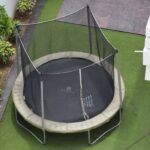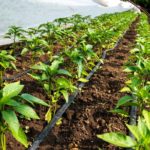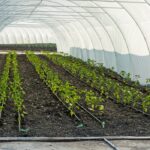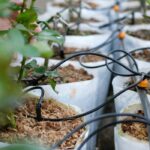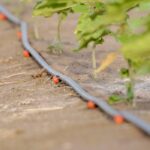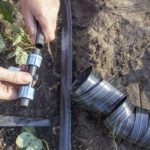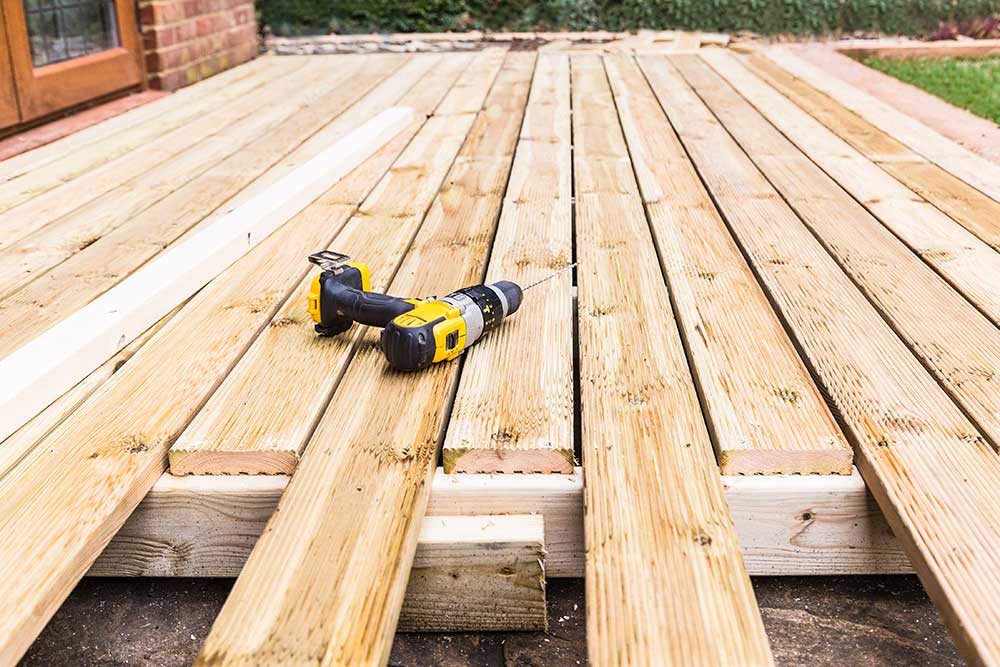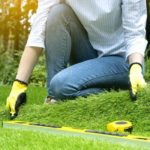Drip emitters are the end devices that are attached to drip tapes and drip tubes. Practical and efficient, drip emitters are used in drip irrigation systems to deliver water to plant roots. But how far apart should you space drip emitters for the best results?
As a rule of thumb, it’s best to place 1-GPH emitters at each plant. For young trees, more emitters spaced around the base is appropriate. You can water smaller beds with emitters (one per plant) or sprayers which cover more area but use more of the lines pressure.
Proper drip emitter spacing is important to ensure that water reaches the plant roots. Let’s look at how many emitters a drip irrigation system needs and the optimal distance between these emitters.
What Is a Drip Line?
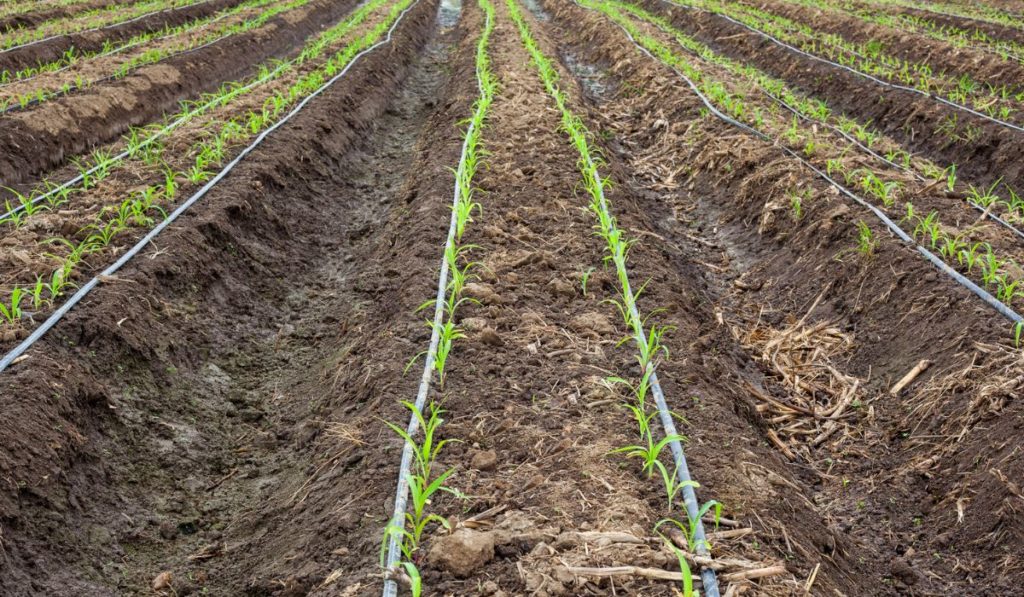
A drip line (on Amazon) is used in drip irrigation to supply water to the plant roots. It comes with emitters already embedded at specific lengths that typically range from 6 to 24 inches.
A drip line can be laid in straight rows or used to create rings around trees. Or they can simply be run from point A to point B – from the faucet or hose to wherever you need them! This feature makes drip irrigation and simple drip lines great for hanging baskets especially. They are available in ¼-inch and ½-inch sizes.
What Are Emitters?
Drip emitters are a vital component of any drip irrigation system. Also known as drippers, they are attached to tubes and drip tapes to drip water at a specific rate near a plant.
Usually constructed from polyethylene hose or PVC, these devices control the water discharged near the plants. They come in different styles and flow rates, making them highly suitable for various applications.
How Many Emitters Can You Put on a 1/4-Inch Drip Line?
The recommended number of emitters that you can put on a ¼-inch drip line depends on its length. For a drip line that’s 16 feet in length, you can put 32 emitters evenly spaced at 6-inch intervals (but you probably don’t need that many).
If the maximum length of your drip line is 28 feet, then the recommended number of drip emitters is 28 given that the spacing between emitters is 12 inches.
And note that other drip irrigation hardware like sprayers or small control vales can be used, but they will take some pressure out of the system. If you have 10 drip emitters and add 4 sprayers to the end of a line, maybe to cover a small flowerbed, those sprayers could start to lose pressure and not spray quite as well or as far.
This is why drip irrigation systems require a bit of guessing and checking from time to time. It’s not unusual to put all your hardware out and then realize you need to move things around to manage pressure and flow. For smaller systems, there’s a better chance you won’t have to think about any of that though.
Mistakes to Avoid When Installing a Drip Line
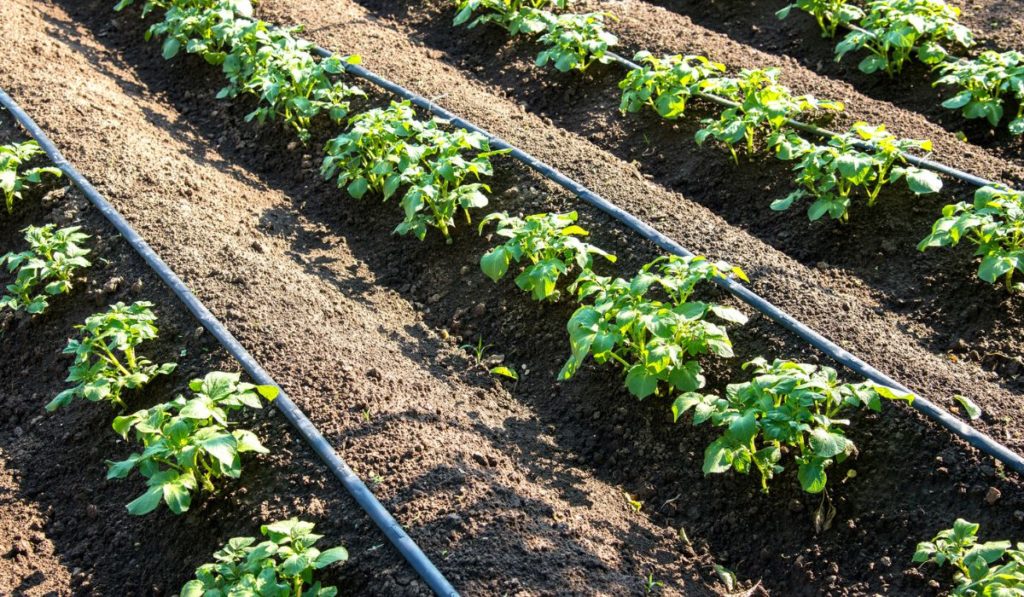
Drip lines are very easy to install; however, there’s always a margin of error for the novice installer. The following are mistakes that are commonly made by users and tips on how you can avoid them:
Overwatering the Plants
We’re used to seeing puddles of water near the plant or large wet spots on the ground when we use traditional methods to water our plants.
Drip irrigation, on the other hand, provides water efficiently to the plant’s root zone; therefore, there’s only a small spot of water on the surface where the dipper is placed. As there’s hardly any water at the base of the plant, new gardeners tend to overwater their plants.
To find out the extent of water penetration, run your system for half an hour only. Wait for another half an hour and then dig around the plant to find out if there’re any dry spots. You can also add another emitter or adjust the placement of the existing one for efficient watering.
It’s also best to start with a low amount of water. Keep an eye on your plant’s health and adjust the watering time or water volume accordingly.
Using the Wrong Dripper Type
Different plants have different watering needs. If you’ve planted different types of plants in the same zone, then you’ll have to make sure that you’re providing water to each plant according to its needs.
It’s best to place plants with different watering needs in different zones; however, if that’s not possible, then you’ll have to adjust your system accordingly.
Place drippers with a higher flow rate at the plants that need more water, or you can add multiple drippers with low flow rates near such plants. Be sure to place the emitters at least 6 inches away from the plant base to avoid fungal infection.
Inconsistent Water Supply Pressure
Typically, drip irrigation systems need almost 25 pounds of water pressure to work optimally. Emitters that are rated for 25 psi function well even at pressures as low as 15 psi.
Although the flow output will be less compared to 25 psi, the difference can be covered with a longer watering time. Too little pressure will mean inconsistent water flow from the emitters, while too much pressure may cause your drippers to squirt rather than drip.
You can install a pressure regulator (on Amazon) to avoid the problem of over-pressure. To solve the low-pressure problem, instead of a standard drip irrigation system, consider using systems made for low-pressure water supply applications such as rainwater catchments.
Inadequate Water Supply
Your water supply flow rate and the flow rate your system needs should be equal. You’ll experience inconsistent water flow from your emitters if the water supply is less than your system’s capacity.
You can use emitters with a lower flow rating or decrease the number of your emitters to avoid this problem.

